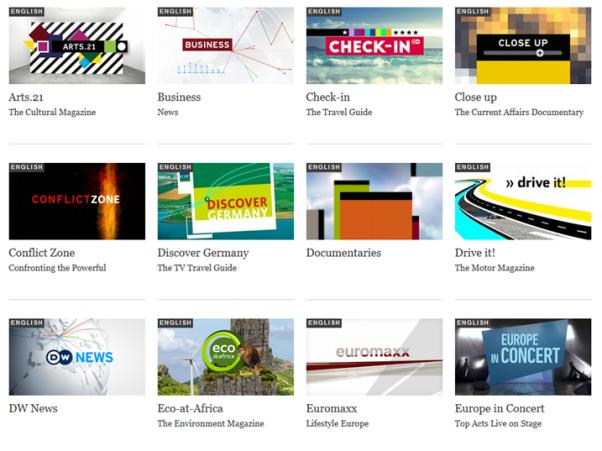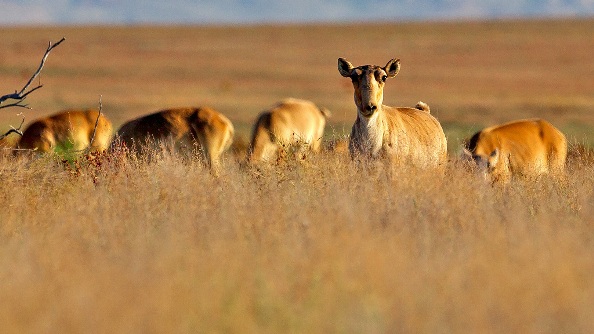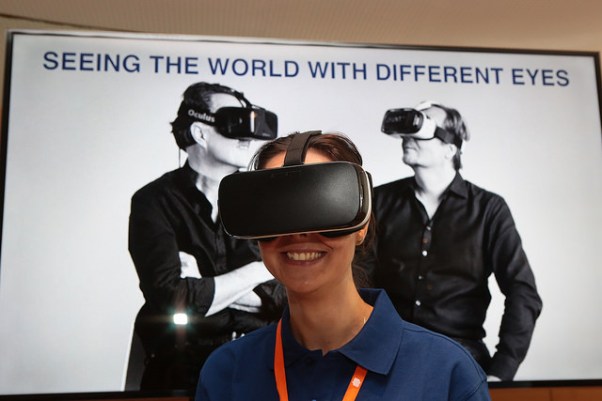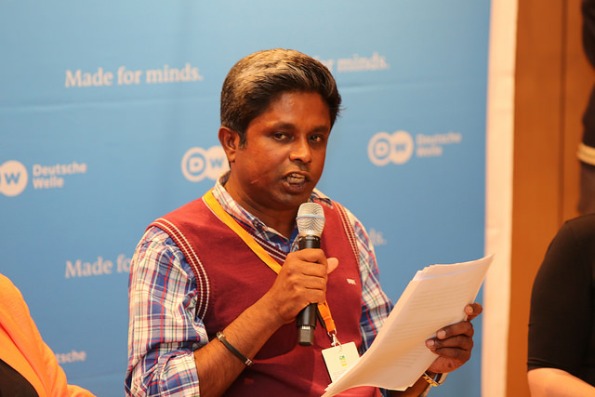A voice for Latin America – Uruguay’s Pepe Mujica
Former Uruguayan president José “Pepe” Mujica has distinguished himself as a voice for progressive values and for being a social reformer. As one of Latin America’s most notable personalities, during his presidency Uruguay transformed itself into one of the most liberal countries in Latin America.
Now Mujica is appearing on DW’s Spanish-language website every two weeks to share his ideas on what is shaping the Latin American world and beyond. Conciencia Sur – El mundo según Pepe Mujica (The conscience of the south – The world according to Pepe Mujica), makes a valuable contribution to the depth and diversity of opinion on DW’s Spanish-language web content. By giving a platform to one of the most notable contemporary political figures in Latin America, DW can reveal unique insight into issues that are important to the region.
In his video commentary , Mujica shares his views on issues like fanaticism, corruption, greed and the ineffectiveness of international agreements to protect life and nature. He talks about problems facing young people, while at the same time saying that never before have people had the resources and knowledge to change the planet for the better.
Much like the DW program La voz de tus derechos from Cuban blogger Yoani Sanchez, Conciencia Sur brings an alternative perspective into social issues affecting Latin Americans. Outstanding public figures are set apart by the ideas they represent and the force of conviction in which they express themselves. With respected wisdom and a unrivaled dedication to his ideas, Pepe Mujica’s originality and insight will make a big impression on everyone who hears his message.
Market roundup: September 2016
The news aggregation app, Smartnews, now includes English-language content from DW. The product of a Japanese startup, Smartnews has 13 million monthly users and was nominated this year for the Google Play Awards in the innovation category.
After expanding cooperation with the censorship circumvention specialists, Psiphon, DW’s Farsi news content is reaching more people in Iran. In one month, more than 85,000 daily users have been able to access DW’s independent and accurate global news coverage using Psiphon’s desktop and mobile technology. DW has worked with Psiphon for several years to deliver content to places where local sensors block international news.
Asia
The most advanced IPTV provider in India has acquired DW’s English-language channel, DW, for its channel package. Bangalore-based LukUp Media operates a “light stream” network that keeps transmission costs low and makes LukUp content more affordable for a wider group of consumers. In its first year of operation LukUp has added 150,000 subscribers.
DW is now on the OTT platform My Super TV in Hong Kong operated by the pay TV partner TVB. DW’s English-language channel, DW, will be available along with other international providers.
The second-largest cable provider in Pakistan is carrying DW. Tri Star cable in Lahore broadcasts the DW’s English language channel, DW, to more than 100,000 subscribers. And DW is being carried by a new cable partner in Mardan, Pakistan. Mardan Cable Network is the largest provider in the city with 35,000 subscribers.
Searching for the last of the Saiga
They set up their tents and the sun sets below the immense horizon of the Kazakh steppe. As darkness closes in and the team settles down for the night, doubt begins to rise. Will they ever find the last herd of Saiga antelope? Weeks before, over 90 percent of the world’s largest Saiga population dropped dead from a mysterious infection. Nearly 200,000 animals died in the space of days. Their carcasses littered the landscape.
Now a team of researchers, along with a production team from DW’s Global Ideas, is on a journey to discover why. But they have crossed a thousand kilometers and there are no Saiga, only swarms of mosquitoes. Hidden somewhere in the endless landscape, is all that’s left of a critically endangered species. Can the team led by led Steffen Zuther from the Frankfurt Zoological Society protect what remains of the species?
Morning arrives and the herd isn’t where it is supposed to be and rain has turned the dirt roads into impassable muddy puddles. The researchers have tracking collars on two animals, but they don’t know exactly where the Saiga are. According to Zuther, the Saiga can run 100 kilometers in one day and their search area, the Altyn Dala reserve in central Kazakhstan, is the size of France.
“The steppe is an incredibly beautiful and surprising landscape,” says Zuther. “The openness is truly impressive. Such expanses you don’t find anywhere else but at sea.”
Will the team ever find the last of the Saiga? The whole story is now on Saigas in distress, a multimedia production that combines video, photos and text for an interactive and immersive experience. Using the multimedia storytelling tool Pageflow, stunning cinematography and photography capture the majesty of the steppe and lets users experience the environment and join the team as the story unfolds.
Along with the Frankfurt Zoological Society, DW’s partners on Saiga in distress include the Association for the Conservation of Biodiversity of Kazakhstan (ACBK), Flora and Fauna International, Royal Society for the Protection of Birds and the Committee for Foresty and Wildlife.
Telling stories with virtual reality
What if you could feel what it is like to be there as news happens? Using new virtual reality tools, journalists can recreate news worlds and users can interact directly with the environment.
DW’s Innovation projects team presented this technology at the Global Media Forum and allowed the audience to experience the latest applications and devices.
It is striking how a virtual reality story creates a sense of presence and forces people to think differently about a story. Users can experience the news as a protagonist, and encounter jarring emotions and sensations. The meaning of a story is transferred directly by the medium and the information becomes an accessory, just like in real life.
A best practice example of applying virtual reality technology to journalism comes from the Guardian in their report on solitary confinement. The multimedia story, “6 x9: explore solitary confinement in 360”, expresses how solitary confinement could be considered torture by combining first-hand reports with the VR experience of being confined to a cell 23 hours a day. Another example, Harvest of Change, from the Des Moines Register in the United States, explores issues reshaping farming in America.
This user experience is becoming more accessible because a variety of virtual reality accessories for mobile devices are more affordable.
Wireless virtual reality headsets are set to grow in popularity according to analysis from DW Innovation. Immersive info-graphics providing data on top of a virtual environment could be another big opportunity to translate complex stories to a wider audience in a visually appealing way. In an early VR experiment, DW Innovation cooperated with the Berlin VR start-up VRagments to visualize parts of the new Berlin Airport (BER), which is still under construction.
As the trend in virtual reality news progresses, innovators like those at DW will be asking how to create and improve virtual reality stories that address what viewers want and uncover their interests to intimately depict important stories.
Bangladeshi freedom of speech in exile
When the Bangladeshi blogger and publisher Ahmedur Rashid Chowdhury was attacked by Islamists in his office in October 2015, he had been continuing to exercise free speech while knowingly living under threat. At the time several other bloggers who worked with Chowdhury had already been hacked to death for secular and critical writing, including the blogger Avijit Roy earlier in 2015. Barely escaping with his life, Chowdhury decided to leave Bangladesh and currently has asylum in Norway, from where he continues to write about his home country.
Speaking in a panel at the Global Media Forum, Chowdhury acknowledged that he has difficulty talking after the machete attack, as he explained that he would continue to write for those in Bangladesh who are “uneducated and need to know”.
He is one of many Bangladeshi thinkers, writers and bloggers who have been forced to flee their country to Europe, caught somewhere between brutality and isolation just for telling the truth. Also at the panel were Anaya Azad and Shammi Haque who are two young bloggers from Bangladesh who have been forced to leave their friends and families and were given asylum in Germany. They continue to work for people in Bangladesh, while looking forward to the day when they may return home.
The exiled bloggers said that the unifying factor in the deadly climate in Bangladesh was Islamic-based religious extremism that vehemently disallows any criticism or thought that goes against its precepts. This is combined with the unwillingness of government and police to combat extremism. Bloggers make easy targets where the killers are unknown and the government and police take no action. According to one of the panelists, nine bloggers in Bangladesh were killed last year.
DW is actively supporting these brave voices and making sure their stories are heard around the world. The panel was part of a larger campaign, Bloggers at Risk, which focuses on free speech, human rights and freedom for incarcerated bloggers around the world.













Feedback